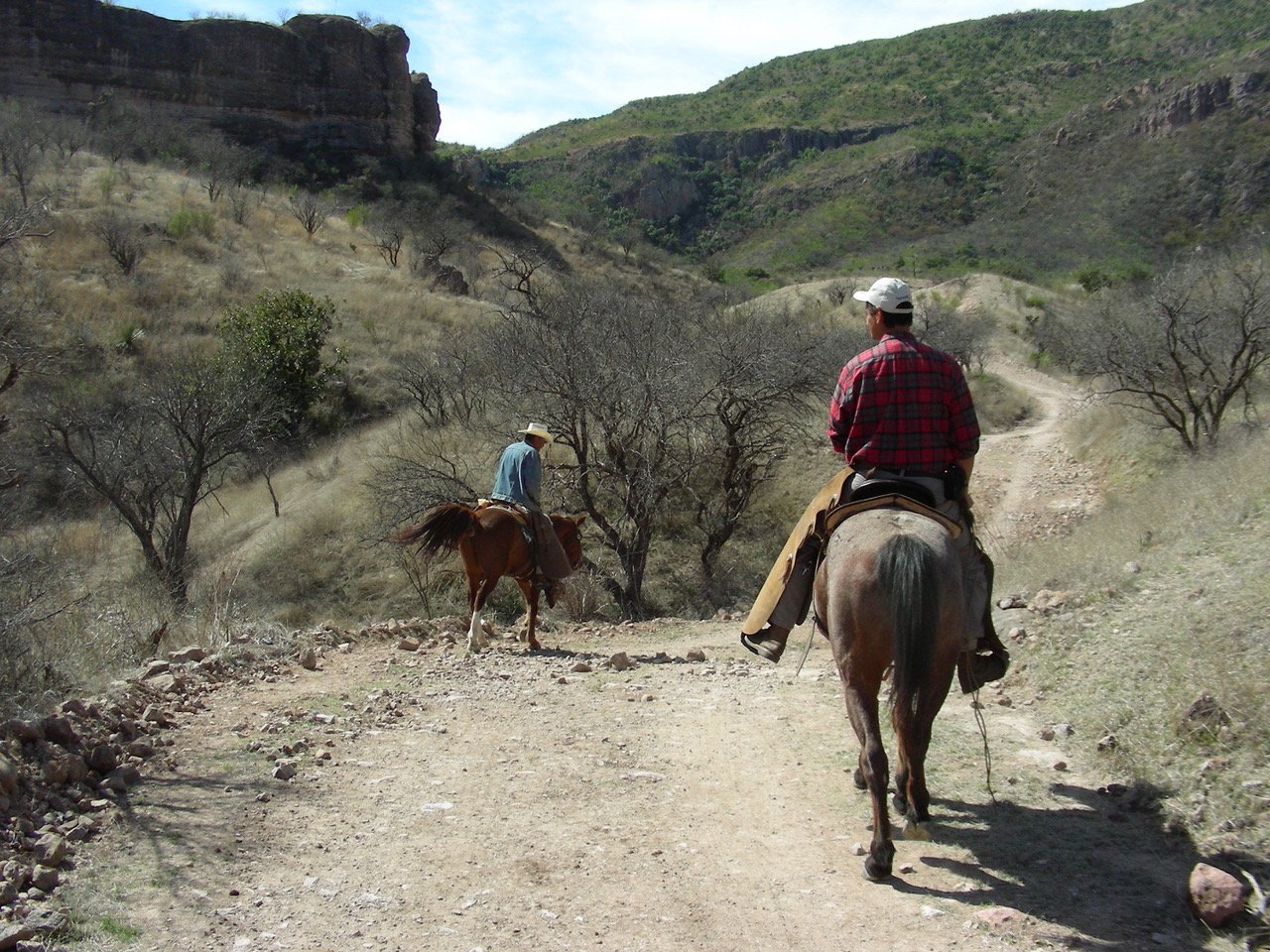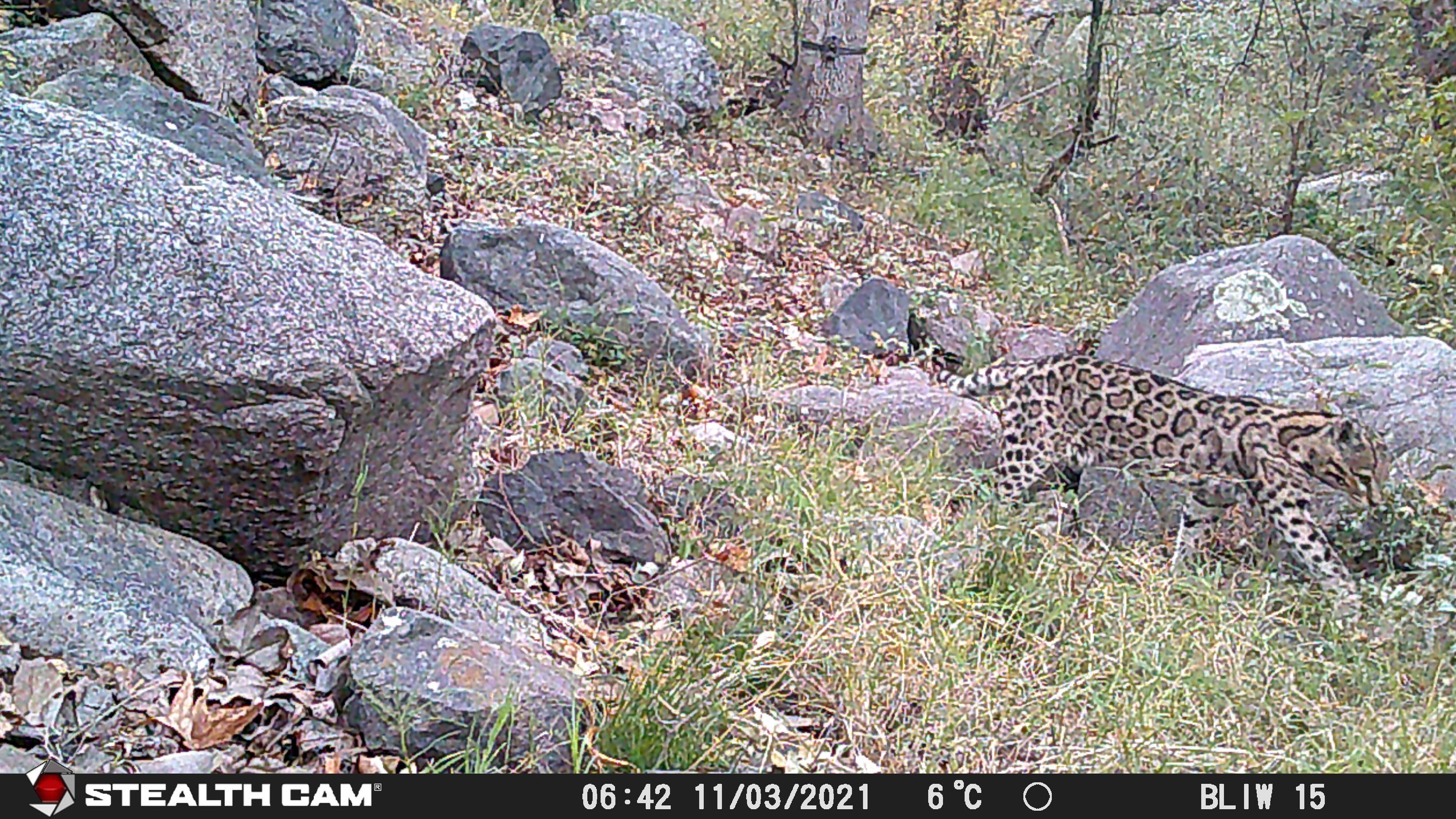Rewilding at the Borderlands: Returning Jaguars and Ocelots to their Native Land
“Yeah, we’re still shooting, but it’s time we traded a rifle for a camera.”
Rare video footage of a jaguar caught on camera using a bridge to cross under a highway in Sinaloa, Mexico by Wildlands Network and partners
The jaguar has long been a respected and worshiped symbol of power. For more than 3,000 years, its iconography has endured in the Americas, often depicting the jaguar as able to move between worlds as it can move in both day and night, land and water, jungle and bush forest. The continent’s largest wild cat was considered a Mesoamerican spirit guide, or nahual, that dominated evil spirits as it dominated its prey.
The ocelot, its smaller cousin, follows in its path – the word ocelotl itself means jaguar in Náhuatl. Twice the size of a house cat, the ocelot slinks through the same rainforests, bushes, and arid lands as the jaguar. Its agility and fearlessness represented a mix of stealth and strength that warriors revered in Mesoamerican cultures.
Another rare record of an ocelot crossing through culverts in Sinaloa, caught on camera as part of a Wildlands Network coordinated project
Once flourishing from the southern tip of Argentina to as far north as Texas and Arizona, these cats can adapt to almost any habitat. Can you imagine a jaguar in the Grand Canyon? It was once its home, where it must return.
As predators, jaguars and ocelots serve vital roles in the equilibrium of the diverse ecosystems they inhabit. However, these once-revered cats are now often perceived as trophies or threats, hunted for pelts or to address real or perceived livestock threats. As a result of hunting and human development, jaguar and ocelot populations are critically low in their northernmost habitat in Northwest Mexico and the U.S. Southwest.
To help repopulate their native habitat in the Mexico-U.S. borderlands, we need to 1) recover their populations in Sonora, Mexico, 2) protect movement corridors in and between countries, 3) enhance international collaboration at all levels of government, and 4) reinstate their roles in large ecosystems.
Taking each of these steps is a complicated process. To start, we need more data. Jaguars and ocelots have evolved to remain undetected and blend perfectly with their environment, their brown rosettes against tan fur aiding their disguise. They are quick and nimble in front of cameras. It also doesn’t help research that they prefer rugged terrains away from human populations.
As a result, accurately recording their location and population numbers is a difficult task. For example, recent records in Arizona, along with habitat connectivity models, indicate that the Sierra-Azul El Pinito corridor in Sonora, Mexico is the preferred route for jaguars to reach the U.S. However, they remain elusive in this corridor, with few definitive records obtained so far.
Additionally, competing priorities—between ranchers and conservationists, the U.S. and Mexico, habitat connectivity and the border wall, and more—cause fierce debate among regional stakeholders. Ranchers fear the re-introduction of predators; the border wall creates a massive barrier to jaguar movement into its habitat in the U.S; some conservationists argue for actively re-introducing jaguars while others stand behind a natural return.
Once stakeholders agree on a path forward, enforcing environmental law in Mexico can be a difficult task in itself.
However, realizing the importance of protecting jaguar and ocelot populations, Wildlands Network has stood up to these challenges for years. Juan Carlos Bravo, Conservation Programs Director, Mirna Manteca, Northwest Mexico Program Co-Director, and Cecilia Aguilar, Sonora Project Manager, continue to find ways to tackle conflicts by involving local communities in on-the-ground research.
“Before joining Wildlands Network, I had the honor of launching the Viviendo con Felinos® project, currently managed by our partners, Northern Jaguar Project and Asociación Conservación del Norte in central Sonora. To this day, the project continues to generate goodwill amongst ranchers whose lands are also jaguar, ocelot, cougar, and bobcat habitat,” Juan Carlos says. The program offers monetary rewards for obtaining pictures of these felines using camera traps set up on their property.
Juan Carlos in 2009 surveying jaguar habitat in Central Sonora with local cowboy and Northern Jaguar Reserve Guardian Heraclio “Laco” Duarte. Photo credit: Richard Williams.
“Back then, we decided to give the landowner the opportunity to name the first jaguar caught on camera so there would be some emotional attachment to her. He named her Yuri, after his daughter, and thus began a great tradition of ranchers naming local jaguars for family members. Pictures of Yuri were always a highlight for his family, even when she appeared in other places.
At Wildlands Network, I coordinated the largest simultaneous camera-research effort in the state of Sonora to collect jaguar and ocelot data across seven different locations in the eastern half of the state. Multiple partners joined us in implementing a single field methodology at each of their sites. Through the project, our friends from Profauna captured evidence of the celebrity U.S. jaguar El Jefe, alive and well in Mexico. The project again confirmed that jaguar conservation and collaboration are inseparable,” reflects Juan Carlos.
An ocelot caught on camera at Oro Negro ranch. Photo captured by the landowners, who named the ocelot “Centurion”
Mirna adds, “In addition, at wildlife monitoring workshops, we show the landowners how to operate and install the cameras, talk to them about predators, and explain their role in jaguar conservation.”
We’re also working with U.S. agencies, Mexican organizations, and ranchers to secure corridors and habitat connectivity for jaguars in strategic regions of Sonora and Sinaloa around the borderlands, a project funded by the Fish and Wildlife Service and in collaboration with the Northern Jaguar Project and Proyecto Jaguar. We've successfully captured both jaguars and ocelots on camera in Sinaloa, taking steps closer to restoring priority corridors impacted by the construction of roads.
Mirna and Cecilia checking cameras in Oro Negro Ranch
These experiences demonstrate the need and reward of directly involving local communities and landowners in fieldwork and conservation. “Tapping into locals helps us work more efficiently and expands our reach – they can do things we can’t do and go to places we can’t go,” notes Mirna.
We are spreading a culture of conservation to facilitate on-the-ground research in Mexico and North America at large. In doing so, we’re rewilding jaguars and ocelots in their native lands, a beautiful return to the power they’ve always held.




